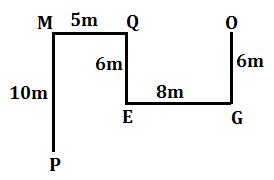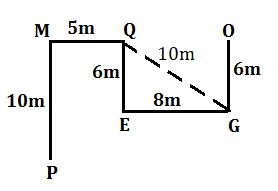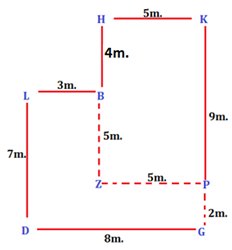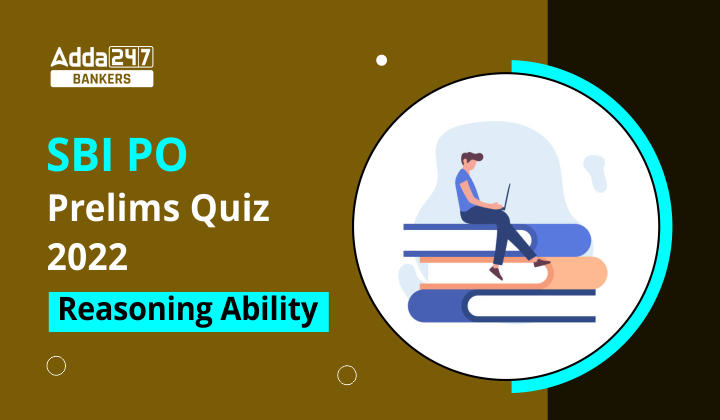Directions (1-5): In this question, relationship between different elements is shown in the statements. The statements are followed by conclusions. Study the conclusions based on the given statement and select the appropriate answer.
Q1. Statements: P>Q>R=U, U≥T<S, T≥W
Conclusions: I. R>W
II. U=W
(a) Only conclusion I is true
(b) Only conclusion II is true
(c) Either conclusion I or II is true
(d) Both conclusions I and II are true
(e) Neither conclusion I nor II is true
Q2. Statements: P>Q>R<U, U≥V>S, V<W
Conclusions: I. P>S
II. P < S
(a) Only conclusion I is true
(b) Only conclusion II is true
(c) Either conclusion I or II is true
(d) Both conclusions I and II are true
(e) Neither conclusion I nor II is true
Q3. Statements: A = K > X < L > N ≤ R; Q ≥ A; N = M
Conclusions: I. Q > X
II. K > M
(a) Only conclusion I is true
(b) Only conclusion II is true
(c) Either conclusion I or II is true
(d) Both conclusions I and II are true
(e) Neither conclusion I nor II is true
Q4. Statements: J = K > X < L > N ≤ R; Q ≥ K; J < M
Conclusions: I. Q > X
II. X < M
(a) Only conclusion I is true
(b) Only conclusion II is true
(c) Either conclusion I or II is true
(d) Both conclusions I and II are true
(e) Neither conclusion I nor II is true
Q5. Statements: J >K > X < L > N ≤ R; Q ≥ J < M
Conclusions: I. R < M
II. M ≥ R
(a) Only conclusion I is true
(b) Only conclusion II is true
(c) Either conclusion I or II is true
(d) Both conclusions I and II are true
(e) Neither conclusion I nor II is true
Directions (6-10): Study the following information to answer the given questions
Q6. Statements: O≤B≥T=D≤J<F>G
Conclusions: I. F<O
II.F>T
(a)Only I is follow
(b)Only II is follow
(c)Either I or II follow
(d)Neither I nor II follow
(e)Both I and II are follow
Q7. Statement: K= Y < H, R ≤ H, R ≤ U
Conclusions: I. H > U
II. R < K
(a)Only I is follow
(b)Only II is follow
(c)Either I or II follow
(d)Neither I nor II follow
(e)Both I and II are follow
Q8. Statements: X≥L>A=W<P, A=T≥B<R
Conclusions: I. R >A
II. P > R
(a)Only I is follow
(b)Only II is follow
(c)If either I or II follow
(d) If neither I or II follow
(e)If both I and II follow
Q9. What should be placed in place of question mark(?) in equation ‘B ≤ A ? N ? K’ to make B < K always follow.
(a) =, >
(b) =, <
(c) =, ≤
(d) =, ≥
(e) None of these
Q10.Statements: Z > C ≥ B, T = B ≤ V, Q ≥ B
Conclusions: I. B < Z
II. Z ≤ B
(a)Only I follows
(b)Only II follows
(c) Either I or II follows
(d) Neither I nor II follows
(e) Both I and II follows
Direction (11-13): Study the information carefully and answer the questions given below.
Adarsh starts his journey from point P and walks 10m in north direction to reach point M. From point M, he takes a right turn and walks 5m to reach point Q. Now turning to his right, he walks 6m to reach point E. From point E he takes a left turn and walks 8m to reach point G. From point G he takes a left turn and walks 6m to reach point O
Q11. What is the total distance between P and O?
(a) 33m
(b) 34m
(c) 35m
(d) 36m
(e) 37m
Q12. In which direction point G with respect to Point M?
(a) South
(b) Northwest
(c) Southwest
(d) Southeast
(e) East
Q13. What is the shortest distance between Q and G?
(a) 10m
(b) 9m
(c) 12m
(d) 15m
(e) None of these
Directions (14-15): Read the given information carefully and answer the given question.
P is 9 m to the south of K. K is 5 m to the east of H. H is 4 m to the north of B. L is 3 m west of B. D is 7 m south of L. G is 8 m east of D.
Q14. If Point Z is 5 m to the west of point P, then what is the distance between B and Z?
(a) 8 m
(b) 9 m
(c) 5 m
(d) 2 m
(e) 6 m
Q15. How far and in which direction is point K from Point G?
(a) 11 m to the south
(b) 7 m to the north
(c) 11 m to the north
(d) 7 m to the south
(e) 11 m to the west
Solutions
S1. Ans. (c)
Sol. I. R > W (False)
II. U = W (False)
S2. Ans. (e)
Sol. I. P > S (False)
II. P < S (False)
S3. Ans. (a)
Sol. I. Q > X(True)
II. K > M (False)
S4. Ans. (d)
Sol. I. Q > X (True)
II. X < M (True)
S5. Ans. (e)
Sol. I. R < M(False)
II. M ≥ R (False)
S6. Ans. (b)
S7. Ans. (d)
S8. Ans. (d)
S9. Ans. (b)
S10. Ans. (a)
Solutions (11-13):
Sol.

S11. Ans. (c)
S12. Ans. (d)
S13. Ans. (a)
Sol.

Solutions (14-15):
Sol.

S14. Ans. (c)
S15. Ans. (c)





 GA Capsule for SBI Clerk Mains 2025, Dow...
GA Capsule for SBI Clerk Mains 2025, Dow...
 The Hindu Review October 2022: Download ...
The Hindu Review October 2022: Download ...
 18th March 2025 Current Affairs | Daily ...
18th March 2025 Current Affairs | Daily ...





